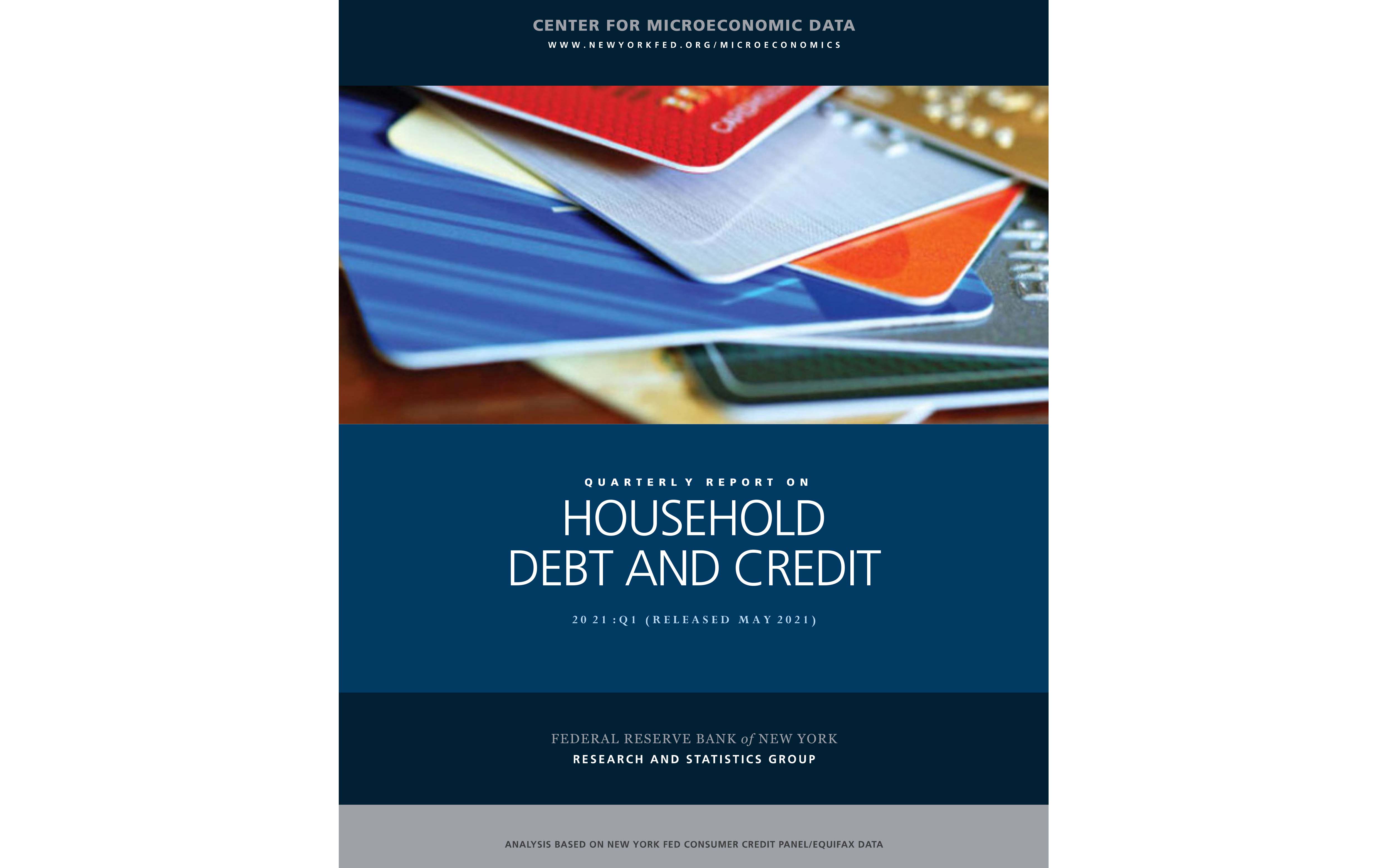U.S. household debt up significantly amid pandemic, but consumers cutting up credit cards, Federal Reserve says
June 7-13, 2021
By Daily Record Staff
As consumers face across-the-board price inflation on everything from gas and lumber prices to higher rental car and storage fees, a new Federal Reserve report says many households are piling on more debt but wisely cutting credit card spending.
The Federal Reserve Bank of New York’s Center for Microeconomic Data recent issued its highly watched Quarterly Report on Household Debt and Credit, which shows that total household debt increased by $85 billion (0.6%) to $14.64 trillion in the first quarter of 2021.
The total debt balance at $14.64 trillion is now $344 billion higher than the year ago and $499 billion above 2019 levels. While mortgage, auto loan, and student loan balances have continued to increase, credit card balances have substantially decreased. The quarterly snapshot is based on data from the New York Fed’s Consumer Credit Panel, a nationally representative random sample of individual- and household-level debt and credit records drawn from anonymized Equifax credit data.
Nationwide, mortgage balances—the largest component of household debt—rose by $117 billion in the first quarter of 2021 and stood at $10.16 trillion at the end of March as the hot housing market continues to gain ground. On the other side of the financial ledger, credit card balances declined by $49 billion in the first quarter, a substantial drop and the second largest quarterly decline in card balances in the history of the data since 1999. Credit card balances are also $157 billion lower than they had been at the end of 2019, consistent with both paydowns among borrowers and constrained consumption opportunities.
Auto and student loan balances also rose by $8 billion and $29 billion, respectively, in the first quarter. In total, non-housing balances (including credit card, auto loan, student loan, and other debts) decreased by $18 billion and are now $49 billion below the fourth quarter of 2019.
New extensions of credit were strong in 2021Q1 in both mortgages and auto loans. Mortgage originations, which include mortgage refinances, reached $1.1 trillion, only slightly below the record high seen in fourth quarter of 2020. Auto loan originations, which includes both loans and leases, edged down slightly but remain high at $153 billion. Only 15% of the $153 billion of newly originated auto loans were originated to borrowers with credit scores below 620, the lowest share seen in the history of the data.
“2021 began with a strong increase in new extensions of mortgage and auto loan credit coupled with a substantial drop in credit card balances,” said Andrew Haughwout, senior vice president at the New York Fed. “However, surging retail sales volumes suggest that a combination of stimulus checks, increased consumer confidence, and pent-up demand are both supporting consumption and also helping borrowers reduce revolving debt balances.”
Aggregate delinquency rates across all debt products have continued to decline since the beginning of the pandemic recession, reflecting an uptake in forbearances which were provided by the CARES Act or voluntarily offered by lenders. These supportive policy measures continue to be visible in the delinquency transition rates, as the share of mortgages that transitioned to delinquency remained low at 0.5%. As of late March, the share of outstanding debt that was in some stage of delinquency was 1.5 percentage points lower than the rate observed in the first quarter of 2020, just as the COVID-19 pandemic hit the U.S. About 114,000 consumers had a bankruptcy notation added to their credit reports, a decline from the previous quarter and a new historical low.
The share of student loans that are delinquent remains extremely low as most outstanding federal student loans remain covered by CARES Act forbearances. Auto loans and credit card delinquency transition rates also continued to decline, reflecting the impact of government stimulus programs and bank-offered forbearance options for troubled borrowers.
The New York Fed also issued an accompanying “Liberty Street Economics” report that examines the change in credit card balances by neighborhood income and age of the borrowers. That supplementary report includes a one-page summary of key takeaways and their supporting data points.
To view the New York Fed’s quarterly report on household, go to: https://www.newyorkfed.org/medialibrary/interactives/householdcredit/data/pdf/HHDC_2021Q1.pdf.Overarching key trends from the quarterly report show there was $1.14 trillion in newly originated mortgage debt in the first quarter of 2021, including a record 73% of it originated to borrowers with credit scores over 760.
Also, about 11,000 individuals had a new foreclosure notation added to their credit reports between January 1 and March 31, by far the lowest number of foreclosures we have seen since the beginning of the series in 1999. The share of mortgage balances 90+ days past due fell to 0.59%, a historic low as forbearance remains an option and foreclosures are mostly on hold.
Concerning the nation’s student loan bubble, outstanding loan debt stood at $1.58 trillion in the first quarter, a $29 billion increase from the fourth quarter of 2020. About 6.2% of aggregate student debt was 90+ days delinquent or in default in the first quarter. The lower level of student debt delinquency reflects a Department of Education decision to report current status on loans eligible for CARES Act forbearances.
Meanwhile, the number of credit inquiries within the past six months – an indicator of consumer credit demand – was at 116 million, a 3% decline from the previous quarter. Inquiries have been subdued since the second quarter of 2020 when the large effects of the pandemic hit the U.S. Account openings declined by 2.4 million accounts and currently stands at 187 million, following a sequence of larger drops since the second quarter of 2020.
Manufactured housing loan borrowers face higher interest rates, barriers to credit
Separately, another federal report Consumer Financial Protection Bureau (CFPB) shows that manufactured housing loan borrowers face higher interest rates, financial risks, and barriers to credit. Manufactured housing is a small segment of the overall housing supply, but it is one of the most affordable types of housing available to low-income consumers and makes up 13% of the housing stock in small towns and rural America, according to May 27 CFPB report.
Those low acquisition costs, however, often come coupled with higher interest rates and limited opportunity to refinance. Consumers who do not own the underlying land are more likely to see their homes depreciate and have fewer protections if they fall behind on payments, the report states. These factors combined can make this affordable housing a potentially risky avenue for homeownership. The CFPB’s report uses new information collected under the Home Mortgage Disclosure Act to shed light on the experiences of these often-overlooked families.
“This report shows the power of the expanded Home Mortgage Disclosure Act data collection to understand the path to homeownership for some of our most vulnerable families, including Black, Indigenous, and Hispanic families, as well as rural and lower-income families of all races and ethnicities,” said Acting Director Dave Uejio. “Much more work needs to be done to understand the options available to these families and how best to help ensure that manufactured housing homeownership can be a path to financial stability for the rural and lower-income families who depend on it.”
According to the U.S. Census Bureau data, Arkansas has 1732 manufacturing housing shipments in 2020 and 312 through February 2021. Nationwide, there were 94,390 manufactured housing shipments across the U.S. in 2020.
The CFPB’s report is based on new information about manufactured housing that was added in 2018 to the list of HMDA data collected. This new HMDA data is the only national level dataset that directly tracks the different types of financing options for manufactured housing. Among the findings in this report:
Overall, around 42% of manufactured home purchase loans are “chattel” loans, which are secured by the home but not the land. In general, chattel loans have higher interest rates and fewer consumer protections than mortgages. Consumers may choose to get chattel loans to avoid putting the underlying land at risk if they default on the loan.
Most manufactured home loan applications are denied, and less than 4% of chattel originations were for refinances. Homeowners seeking a loan on a site-built home are approved more than 70% of the time, but less than 30% of manufactured home loan applications are approved. At the same time, even during 2019’s low interest rates, very few manufactured housing loans were refinance loans.
The top five lenders account for more than 40% of manufactured housing purchase loans, and nearly 75% of chattel lending. The four largest originators are specialty lenders that primarily offer chattel loans to manufactured housing owners. Over time, nonbank lenders have played an increasing role in the manufactured housing lending market, while banks have decreased their activity or exited the market altogether.
Hispanic, Black and African American, American Indian and Alaska Native, and elderly borrowers are more likely than other consumers to take out chattel loans, even after controlling for land ownership. Black and African American borrowers are the only racial group that are underrepresented in manufactured housing lending overall compared to site-built, but overrepresented in chattel lending compared to site-built.
To view the 56-page CFPB report, go here: https://files.consumerfinance.gov/f/documents/cfpb_manufactured-housing-finance-new-insights-hmda-data_report_2021-05.pdf
PHOTO CAPTION:
Although overall U.S. household debt increased by $85 billion in the first three months of 2021, Americans were able to cut credit card, auto, student loan, and other non-housing debt by $18 billion, according to a new report by the New York Federal Reserve District.




